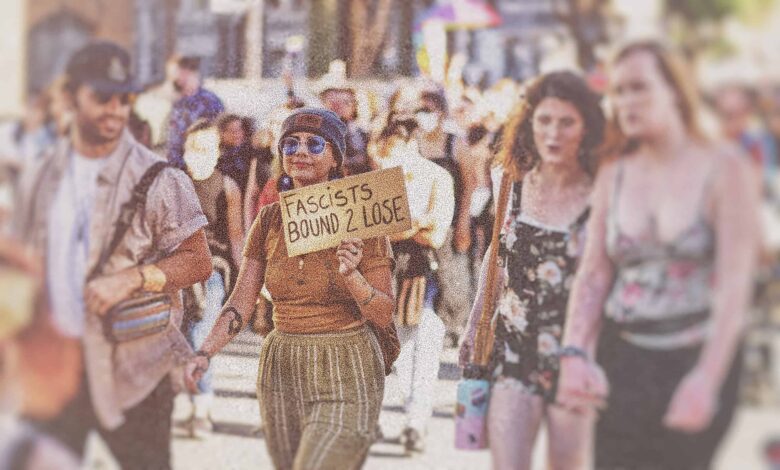Tips on Surviving Sensitivity Readers, Woke Gatekeepers
'False Neutral' author shares what we miss when censors have their say

As that infamous saying goes, we find ourselves living in interesting times.
The current climate is, unfortunately, being deliberately constructed to be confusing, replete with purposefully designed figurative and literal dangers.
We’re all navigating it as best as we can.
For any type of creative producing in this era, the multitude of challenges is daunting. Will your work be misunderstood or misinterpreted, even willfully?
For whom does your work really need to please? The audience, or the myriad of gatekeeper layers between your creation and its intended patrons?
Do you remain true to your vision or do you edit attributes, discard dialogue, reformulate situations, all in a Sisyphean effort to avoid any possible conceived, perceived, or invented offense?
Can you read the rapidly advancing cultural terrain coming at you? As the distance closes, can you spot the as-yet-to-be-named trigger?
How Creatives Can Survive the Woke Nightmare
All artists, now more than ever, must have their own creative “True North” as they produce and release their work into the current landscape. It will serve as a guidepost, granting the safe counterbalance of a weighted keel.
It will keep them and their project on course and headed toward their intended result.
Any creative voyage is always fraught with navigational issues, cross currents, squalls and mechanical failures. It’s always plagued by execution issues like writer’s block in the rigging or flat empty windless seas of doubt.
But an unwavering adherence to their own true north, whether the audience is aware of the parameters or not, has bequeathed style, content, and voices as diverse as:
- Ayn Rand and Ernest Hemingway
- John Steinbeck and Michel Houellebecq
- George Orwell and Somerset Maugham
- Jim Harrison, and Andre Dubus III
- Visual art by Monet and Picasso
- Signatory sounds of B.B. King and Stevie Ray Vaughan
- Iconic imagery from Ansel Adams and Henri Cartier Bresson
Everything distinctive, everything great, everything we cherish, was one artist’s unwavering commitment and relentless battle for their own true north.
Stepping away from the eyepiece and sitting down at the keyboard, I wanted to chart a new creative course. Think old-school craftmanship applied to original, modern stories, stories populated with interesting relatable characters, conveyed in bespoke styles and featuring story arcs and resolutions both satisfying and resonant.
How the Past Shapes Our Future
We all grew up consuming stories that no matter the setting, plot, or action elements, were about real characters rooted in real situations. Their growth, ability to prevail and will to endure in the face of seemingly insurmountable circumstances mattered.
There weren’t always heroes and villains, things weren’t always black and white and the characters’ navigation of the gray provided the drama, created the conflict, and defined the narrative. For the most part, though, there was always growth, transformation and revelation in their journey.
Audiences today are as segmented and bifurcated as the plethora of groups on any given college campus. Writers are inundated with publishing nomenclature, admonitions of mandated adherence to tropes, a bottomless rabbit hole of genres, sub-genres and more, all accompanied by delineated defined marketing placement terminology.
Writers are cautioned that some genres have hard and fast rules, some fixed character arcs and some mandated pre-determined outcomes.
What Matters Most to the Artist
Truth be told, I’m not interested in any of that. That is not why I went into filmmaking, and it is not why I became a novelist. The only two things that matter to me as a writer are what always mattered to me as a reader: story and character.
I serve the story. I serve the characters. I do not impose my will on them. I take the time to let them inform and direct me. They determine how they are portrayed and ultimately how the story is conveyed.
It’s that simple. It’s that difficult. Let the rest fall by the wayside.
The stories, the movies, the art that stays with you, the ones that speak to your soul, the ones that remain with you long after, were all crafted by singular voices, saying what they had to say, in the best way they had to say it.
That will always be the course I chart. That will always be the bearing I steer. That will always be my creative “True North.”
Joshua S. Narins is the author of “False Neutral,” his debut literary fiction novel now available on Amazon. A contemporary character-driven drama set primarily in Boston’s Back Bay and the North End, “False Neutral” is a story of choices made and not made, and the collision of those paths.
Prior to embarking on a writing career, Joshua was a veteran Director of Photography. In addition to Principal Unit Production, he specialized in all aspects of Underwater, Aerial, and
2nd Unit Cinematography. He has lensed work for studio features, independent movies, foreign and cable films, national and international commercial campaigns and special venue projects.
Photo by Patrick Perkins on Unsplash
